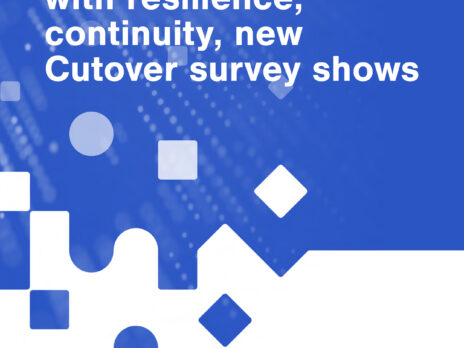
It has almost become a cliché to comment on the speed of digital transformation in the wake of the pandemic. During the early weeks of the crisis, organisations rapidly pivoted towards home working and in-person meetings were forced to move online. With that came the need for digital modes of interaction.
As early as April 2020, Microsoft CEO Satya Nadella announced that the company had witnessed two years’ worth of digital transformation in just two months: “From remote teamwork and learning, to sales and customer service, to critical cloud infrastructure and security, we are working alongside customers every day to help them stay open for business in a world of remote everything.”

The pace has hardly let up since. Even today, as in-person meetings resume, and organisations embrace more flexible working models, there is a sense that something has shifted irreversibly. There will be new challenges in store, but also new opportunities – not least the chance to make data-driven decisions and marry human expertise with new technologies.
For software company Cutover, these changes have added a new sense of urgency to the company’s mission to better enable business transformation. Billing itself as ‘the SaaS leader in collaborative automation’, Cutover seeks to revolutionise how IT departments ensure successful cloud migrations and operational resilience. Its platform connects teams, applications, and technology for the successful planning, orchestration, and analysis of mission-critical work, such as IT disaster recovery and cloud migrations – simplifying what is complex and speeding up what is slow.
It also provides enterprise-wide visibility, meaning there is no need to share spreadsheets between teams, fire off endless rounds of emails, or shout across the office floor.
Enabling visibility with automation
“In most places, there are little pockets where people are well organised, but you need a lot of conversations,” says Cutover’s chief product officer and co-founder, Marcus Wildsmith. “You don’t know how many times people followed the procedure or whether it went well – the only way to do that is to get people together and have a chat about it. That’s a massively labour-intensive way of doing something that you can just embed into the process.”
At the height of the pandemic, with teams no longer in the same building as each other, complex projects such as disaster recovery rehearsals or cloud migrations became harder to orchestrate. Many businesses, accustomed to having to be reactive in time-sensitive scenarios, acknowledged that spreadsheets were no longer serving them well enough.
At the same time, the race towards digital transformation, however critical, was creating a new subset of risks. During a change event, such as an application upgrade or an enterprise-wide migration to the cloud, there is always a chance that systems will go down. Enterprises needed to improve their operational recovery – in other words, their ability to grow from failures.
Cutover’s platform enables users to rehearse and de-risk incidents and quickly implement recovery plans if something does go wrong. Rather than reactively dealing with failures, they can be proactive, considered, and responsive.
“If you’re running your operational workflows in Cutover, you know if a task was performed 50 times in the last eight weeks, and if the team did well at this activity,” says Wildsmith. “Cutover allows you to codify your plan into an executable capability, giving you structure, repeatability, and visibility.”
Coordinate and automate to streamline digital transition
While most enterprises are comfortable with automating simple steps, they tend to struggle with the idea of automating anything more intricate. Cutover can coordinate and automate complex workflows involving multiple parties and numerous technologies. At the same time, people remain in the driving seat, ensuring that critical events are guided by human oversight and creativity.
“When you’re processing massive volumes of sterling to dollar transactions, that’s completely automated – you’ve got the business process, you’ve coded it, and you’re just pumping transactions through it,” says Wildsmith by way of example. “With more complex processes, you might say, I know I need to do these 50 things, but at task 20 something might go wrong, and I may need to jump in and make a decision that can’t be planned in advance.”
Perhaps unsurprisingly, Cutover saw an uptick in its usage during the pandemic, as enterprises sought to navigate a time of tremendous upheaval. In March of last year, the company closed a $35m Series B funding round. That followed a year in which it doubled its revenues and almost tripled its workforce.
While we may still be too close to the pandemic to understand its lasting impact, we do know the initial shock of the crisis forced real changes. ‘Agility’ and ‘resilience’ were no longer just buzzwords – they were the basis on which a business sank or swam.
As digital transformation climbs the C-level agenda, businesses need to think about how this change can be managed and executed. Disruptive new technologies should not be implemented in isolation; rather, they call for nothing less than a whole new model of working.








